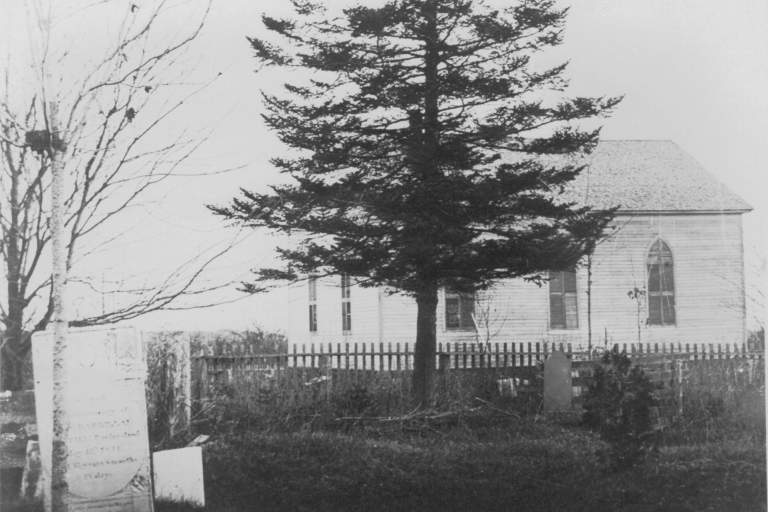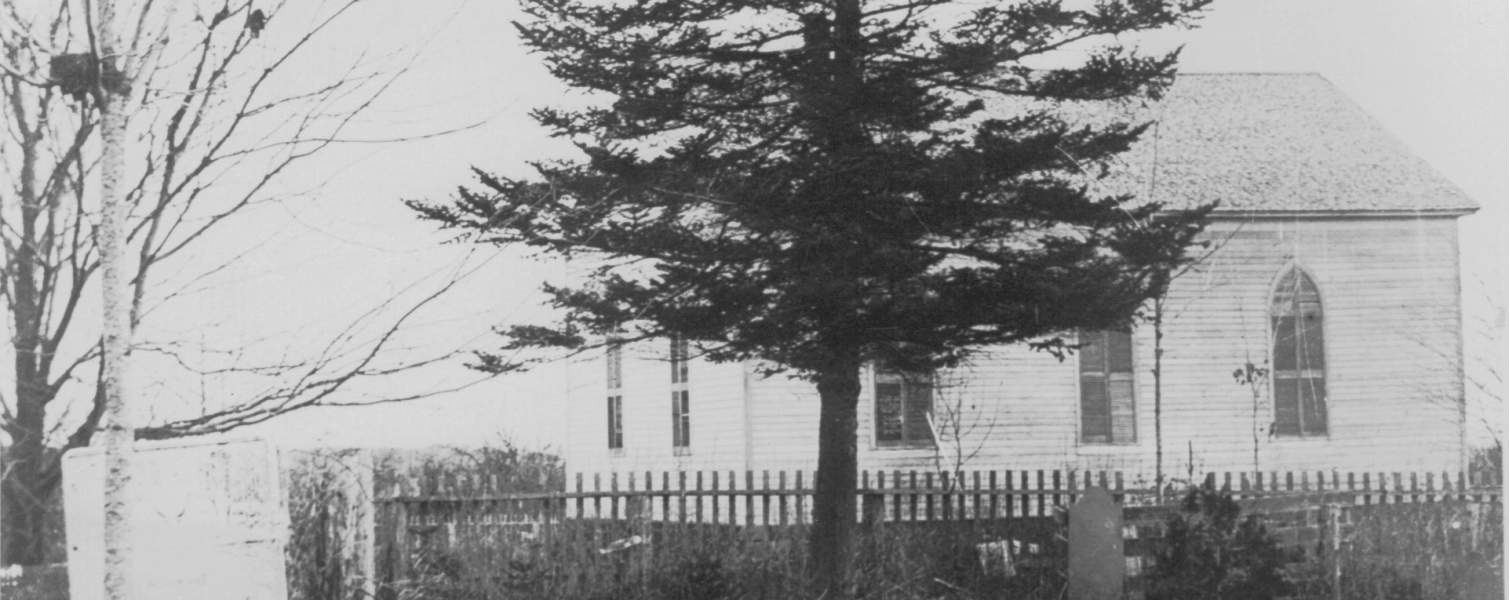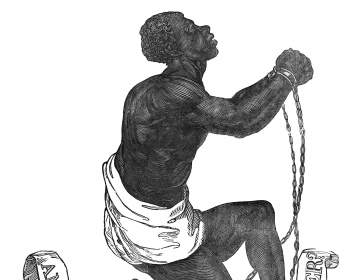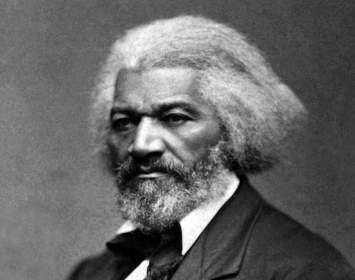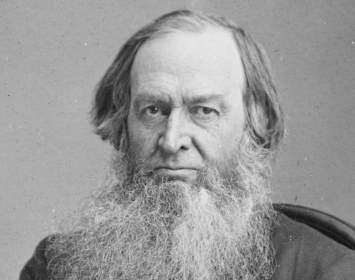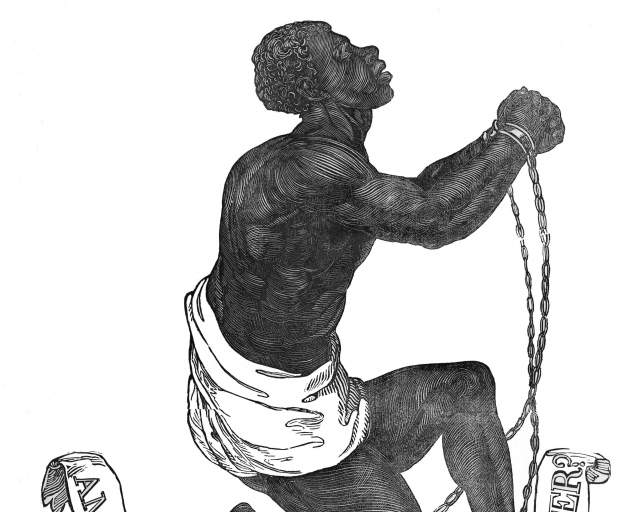Following the August 21–22, 1850, convention opposing the Fugitive Slave Law held in Cazenovia, abolitionist Gerrit Smith conducted a similar two-day meeting in his native Peterboro. The exact dates of this late-August event are unknown.
The program of the Peterboro meeting's first day was held in the Peterboro Baptist Church. The highlight was an oration by Rochester anti-slavery activist Frederick Douglass, who spoke for about an hour and a half "in his own peculiarly earnest, eloquent, felicitous manner." (Smith and Douglass had both taken part in the Cazenovia event just days before.) The second day's program was held outdoors in "a fine grove," presumably the formal garden just east of Smith's Peterboro mansion, then occupied by his newly married daughter, Elizabeth Smith Miller, and her husband.
The quotes are drawn from a letter by Julia Griffiths, a close associate of Douglass in his abolition work. The letter was published in the September 5, 1850, issue of Douglass's newspaper The North Star. This letter is the only known documentation of the meeting; no further information about its program has been located.
The Building and Site. The Peterboro Baptist Society was organized in 1807 and retained its first resident pastor in 1810. The church was erected in 1819 on land contributed by Peter Smith (founder of Peterboro and father of Gerrit Smith). The site adjoined the village's first graveyard.
The August 1850 meeting was not the only abolition-related event to be held at the church. October 6, 1844, James G. Birney, then the Liberty Party candidate for President of the United States, spoke here on the “abolition subject.” (For more on the Liberty Party and other abolitionist political parties, see Gerrit Smith's Profile page.) On September 11, 1864, famed Boston abolitionist William Lloyd Garrison gave an address at the church.
The congregation's last recorded meeting took place in July 1867. After an 1871 Christmas pageant for residents of a local home for destitute children, the building fell into disuse. In 1893, the church structure was sold for $100. Its lumber was used to build a horse barn on a property just south of Peterboro that had once been Gerrit Smith’s alternate residence, “The Grove.” The horse barn was lost to fire in 1949.
The site of the church itself is now occupied by a private home; the adjacent graveyard remains visible from Oxbow and Old County Roads, though it has no fence or marker. (The graves cannot be seen in aerial or satellite imagery because the graveyard is now covered by mature trees.)
Finding the Site. GPS systems can deliver inconsistent results when searching for addresses in Peterboro. To find this site, locate Peterboro's village green in the center of town. Proceed to its westernmost end (where the Gerrit Smith Estate is located). Turn north onto Oxbow Road. (If you turn south you will be on Pleasant Valley Road; if you pass the National Abolition Hall of Fame, you're going the wrong way.) Proceed north on Oxbow Road for about 900 feet. The second intersection (a Y-junction) is that of Oxbow Road and Old County Road; the subject property is between the two roads. Keep in mind that it is a private residence.
Thanks to Norman K. Dann and Donna D. Burdick for research assistance.
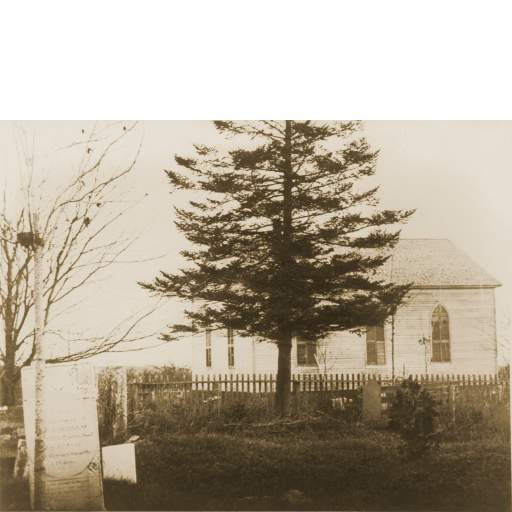
Peterboro Baptist Church
Only known photograph of the Peterboro Baptist Church includes a few headstones from the graveyard in left foreground. This photo was taken by Susan Dixwell Miller, the wife of Gerrit Smith Miller, grandson of Gerrit Smith. Image courtesy of the Peterboro Area Historical Society.

Church Site Today
This private residence occupies the former Peterboro Baptist Church site. The graveyard lays just north of it (to left in this image), hidden among mature trees.
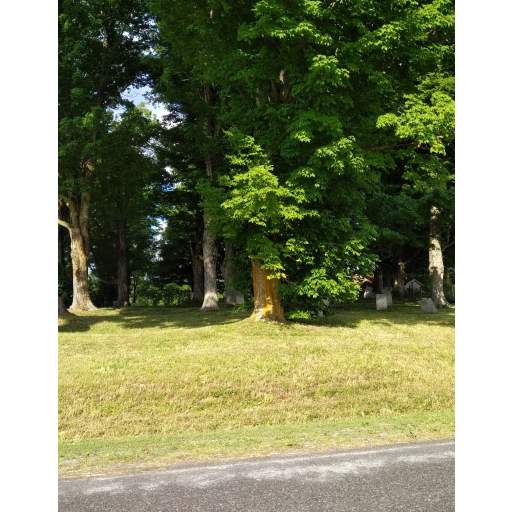
Graveyard among Trees
Headstones of the old church graveyard remain barely visible from both Oxbow and Old County Roads, though they stand among numerous mature trees. This view is from Old County Road; the residence (former church location) is to the left outside the image area.
Associated Causes
Associated Historical Events
Fugitive Slave Law Convention at Peterboro
Late August, 1850
